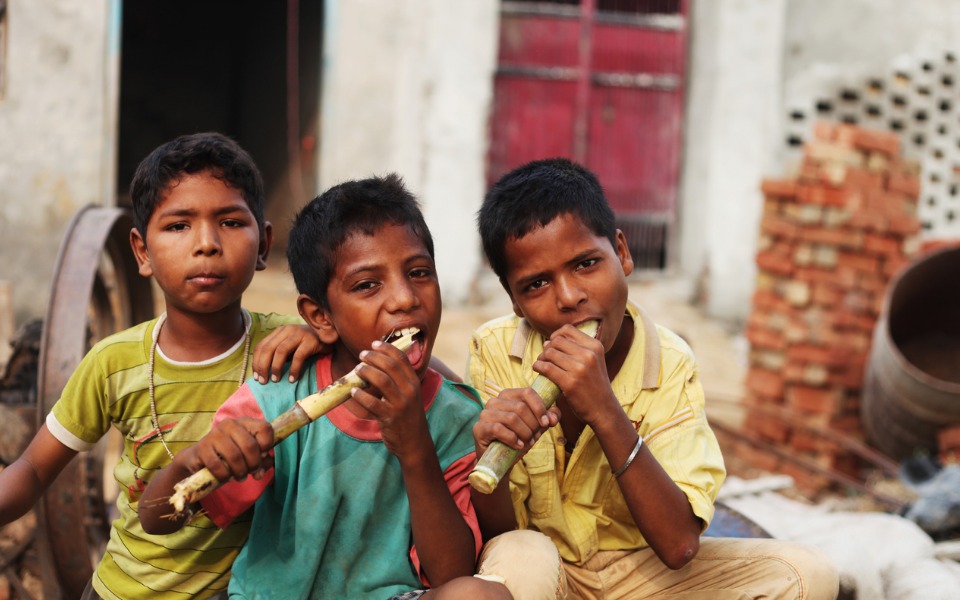
Closure of schools not only affects children's education, but nutrition too
Eleven-year-old Jacqueline would have an egg for lunch every day, besides a vegetable stew and rice—all part of the noon meal that the Tamil Nadu government had begun to offer students at state-run schools around 100 years ago.

Eleven-year-old Jacqueline would have an egg for lunch every day, besides a vegetable stew and rice—all part of the noon meal that the Tamil Nadu government had begun to offer students at state-run schools around 100 years ago.
The Class 7 student from the indigenous Narikkuravar community is one among lakhs of students who have been left without nutritious food for over the past three months.
Jacqueline’s parents, who lost their jobs as garbage collectors a few months before the lockdown began, have borrowed ₹30,000 so far to cook for a joint family of 12 members.
However, the money is sufficient only for one meal a day. Besides skipping breakfast, the family members have lunch around 6 pm to avoid dinner.
Related news: Now, Kerala deploys robot to serve meals, medicines to COVID-19 patients
Lakshmi, Jacqueline’s mother, awaits the reopening of schools in the state that will at least ensure another meal for her daughter. Many parents like Lakshmi, in the colony in South Chennai’s Pallavaram, send their children to a government-aided middle school nearby mainly because of the noon meals provided there. The meals sometimes include even high-protein snacks like sprouted green grams.
A domestic worker, Ammu had been sending her three daughters to the same school. Though she tries to provide them with an egg and some vegetables at least once a week, she sees her daughters becoming thinner each day. Mostly, the girls are fed gruel made with the free rice provided by the state government in ration shops.
History of noon meal programme
In 1923, the noon meal programme was introduced in corporation schools in Madras by the then Justice Party government. In the early 60s, the then Chief Minister of the Madras state K Kamaraj launched the scheme across the state. The successive governments extended it to all students up to Class 10.
However, the Tamil Nadu government has not been able to deliver even dry rations to students in the past three months, unlike its neighbouring states. While Andhra Pradesh and Kerala began the initiative in March, Karnataka started delivering food-grains to students in early April. Not only Tamil Nadu, but Telangana too has not come out with any such plan.
Related news: With schools shut & mid-day meals unavailable, SC issues notice to states, UTs
Padma Priya, a government school teacher in Hyderabad, fears that students in the city may once again suffer from malnutrition. “Several years ago, government school students looked thin as their parents could not provide them with nutritious food. But, once the noon-meal programme was introduced (in the united Andhra Pradesh), their condition improved gradually,” she says.
But lakhs of children in the state face the risk of getting debilitated by malnutrition without adequate intake of protein and micronutrients. “The noon meals will include either an egg or banana, along with plain or vegetable rice and sambar or dhal,” she says.
Dry rations in place of noon meals
However, the neighbouring Andhra Pradesh started providing students with dry rations and eggs as soon as the COVID-19 lockdown was announced. Students in primary schools get 100 grams of dry rice a day, while those in secondary schools get 130 grams.
The students also get eight eggs and four packs of peanut brittles for 10 days. Students can collect the kits at their respective schools, says Devendra Babu, a government teacher in Kurnool district.
Kerala went a step ahead and included pulses, vegetables, bananas, and milk in the kits, besides rice and eggs. Since the state has also been delivering food home, it has engaged workers of over 33,000 Anganwadi centres in food distribution.
Related news: Rat found in mid-day meal served to students in UP school
Meanwhile, Karnataka has been offering rice and toor dal to government school students across the state. “Initially, we had been distributing rice, toor dal, and milk powder once in 21 days. Now, the quantity has been increased and we provide the supplies once in 37 days,” says a headmaster of a government school in Tumkur district.
But a recently-released Times of India report claims that the state had decided to limit the supply of the rations to only 49 taluks that had been affected by drought, out of the total 237 taluks in the state.
Eggs for sale, but not for children
Around 130 km far from Chennai lies Tindivanam, where families from tribal communities like the Irular and Kattunayakar have been selling the eggs produced by their hens, instead of offering it to their children. Each egg can be sold for ₹15, which would help a family in Veeranamur village get a few kilograms of rice.
“Many people sell free rice given at ration shops for ₹5 a kg. As 20 kg of free rice is not enough for a family of five or six, villagers buy some rice from these people,” says D Rajesh, founder of STEPS, an organisation that works for tribals in the region.
Related news: Malnutrition behind 69% deaths among children in India: UNICEF
For protein intake, the villagers, who cannot afford chicken or fish, eat rats caught from agricultural lands, he says.
Rajesh says the government can provide around 10 kg of rice extra to these people and offer eggs to their children through schools. “While managements of schools are functioning, why can’t they provide these children with eggs?” asks Rajesh.
With undernourishment gripping the country and a UNICEF report released in October 2019 claiming that around 69 per cent of deaths among children below 5 years in India had been caused due to malnutrition, it is high time state governments resume or enhance meal-noon schemes and think about ways to deliver them to students effectively.


